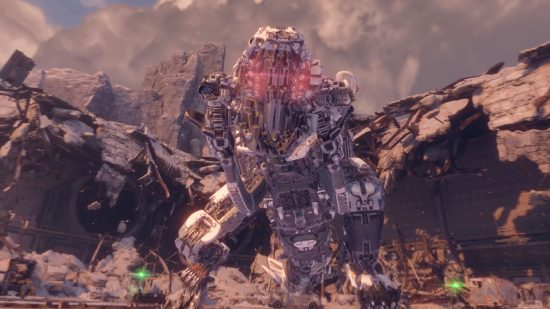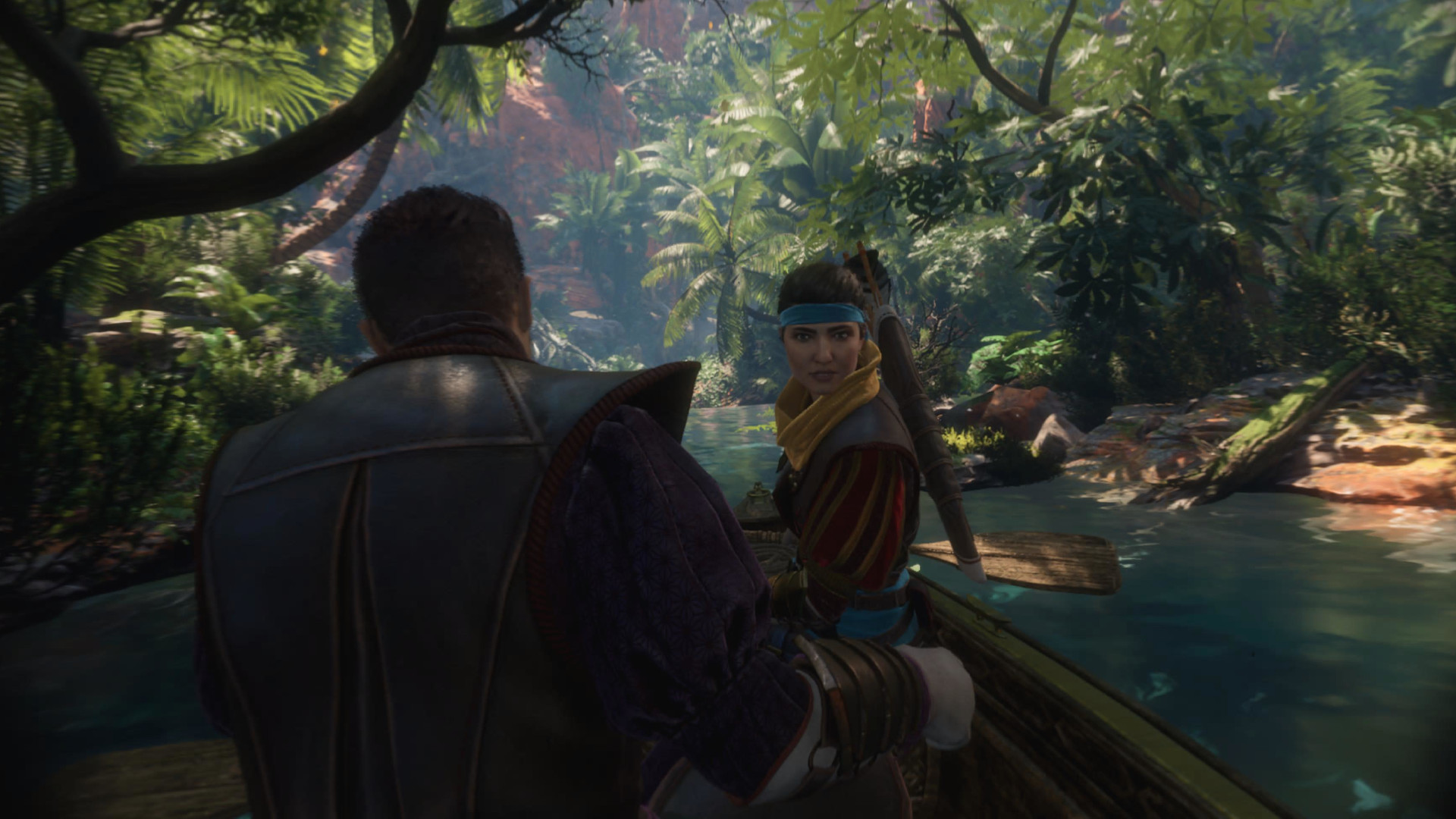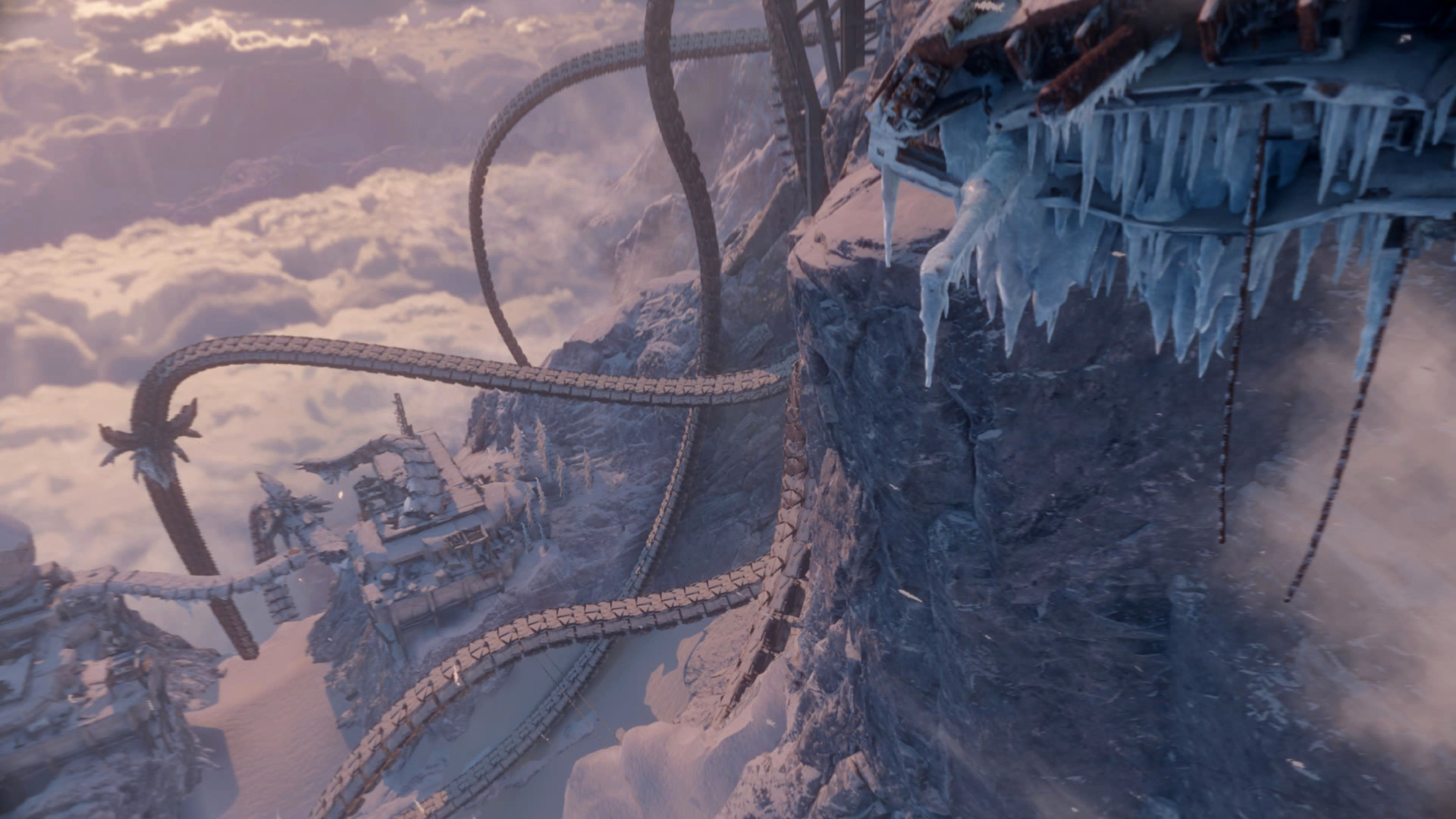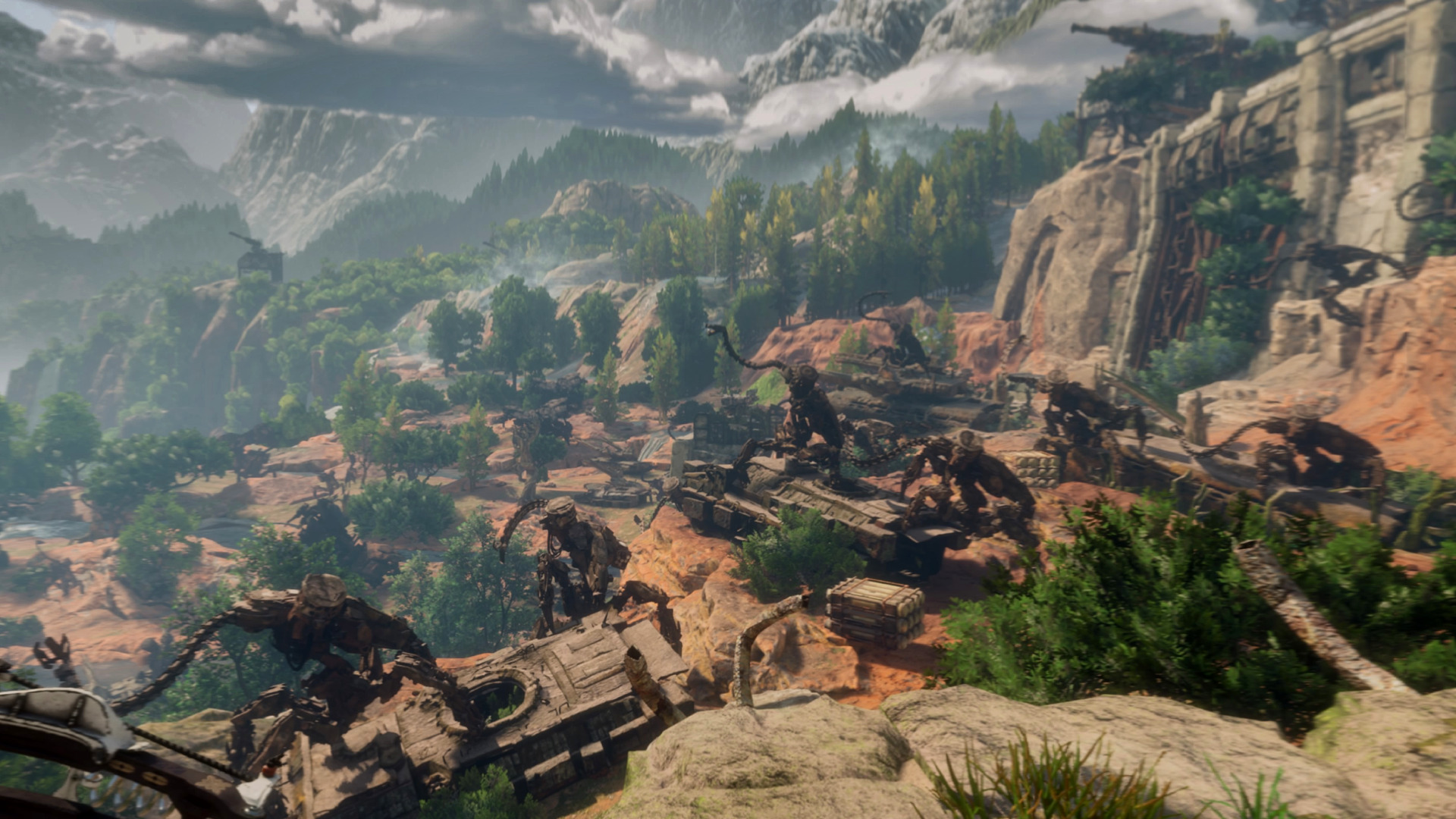Our Verdict
An intricate and rewarding VR climbing adventure held back by an easily forgettable story, Call of the Mountain succeeds in showing off the PSVR2’s best features but fails to leverage Horizon's storied past.
As the flagship game for the PlayStation VR2, Guerilla and Firesprite’s Horizon Call of the Mountain arrives draped in expectations. Bundled with the headset in some cases, many will assume it to prove the power of the hardware (you can read our PSVR2 review here), especially for newcomers to virtual reality. And for the most part, Call of the Mountain succeeds. Best-in-class traversal mechanics and heaps of spectacle help exemplify the headset’s best features, but it is let down significantly by its narrative, and depending on your knowledge of the Horizon series, this can hamper the whole package.
Call of the Mountain starts incredibly strong. Sat on the back of a boat, you’re led through a veritable machine safari, where you can run your fingers through the water and feel the ripples in your palms thanks to the subtle haptic feedback of the Sense Controllers. But, as you might expect, the serenity doesn’t last too long. A rogues gallery of Horizon’s trademark beasts arrive, their exoskeletal details shining up close. Soon enough, you’re frantically climbing your way to safety and getting to grips with a bow and arrow.

But who are you playing as, exactly? Well, Call of the Mountain stars Ryas, a Shadow Carja criminal attempting to repair his reputation by investigating a new danger to the Sundom with the help of Blameless Marad. If none of that makes any sense to you, good luck because the game doesn’t go much further to explain it, never mind the whole ‘animal automatons overrun the earth, sending humanity back to the stone age’ premise. But thanks to the widespread adversarial attitude from NPCs and the seemingly endless repetition of the words ‘Shadow Carja’, you’ll soon learn that nobody trusts you or the ethically murky faction you’re associated with, and it’s going to be an uphill battle to clear your name — literally.
That, plus the fact that you’re missing a brother, is really all you really need to know. I wouldn’t bother trying to understand the rest of it either since Horizon Call of the Mountain’s story feels like a knowing exam for Horizon nerds and an actively hostile one for new players. And let’s be honest; this is a bold strategy for a launch game on a new piece of hardware!
Thankfully, though, the forgettable story and characters quickly melt away when you get to the moment-to-moment action of Call of the Mountain. Traversal in this game is an absolute triumph and feels like a massive step forward for virtual reality. You begin by pulling yourself up mountainsides and stretching over death-defying drops, using momentum to propel yourself skywards. Your typical gym rat, Ryas has plentiful upper body strength but no personality, so expect lots of aimless muttering about the objective at hand. Yet in spite of this, small details like bouncy grass and playful plants make Call of the Mountain’s climbing feel mindful at times — it’s easy to tap in and tune out as you find your rhythm.
Some of the game’s best moments arrive when you’re simply left to solve a vertical puzzle, and you methodically make your way towards a stunning skyward vista. The tracking is responsive, and the immaculate trigger-based climbing controls deliver immersive feedback, so much so that I dipped into a delightful trance as I worked through Call of the Mountain’s extended climbing sessions.
Brain-teasing Half-Life 2-style physics puzzles break up the flow where necessary, and eventually, you graduate to a whole suite of climbing tools that offer welcome variety. The climbing picks feel wonderfully hefty as you leverage your reach to dig into crags and avoid loose ice patches, summoning moments of sheer adrenaline when you fall foul of them.
Another highlight is the rope dart, which you jab into a cushion and then throw at another to form a handy zipline, a feat which never gets old across the game’s six-hour runtime. A fun aspect is that you build some of the tools yourself, which involves a satisfying connect-a-thon of parts before carefully winding some remarkably-simulated string around shafts and handles to secure their structure.
Eventually, you start jumping across gaps using the grip buttons and a pulling gesture, which always results in an awesome slow-mo action movie filter as you flail for safety. While the later wrist-flicking tools can skew a bit fiddly, Call of the Mountain does a good job of blending all of these verbs together, leading to some immersive set pieces that you won’t forget in a hurry and a rewarding glow when you pull yourself up to a hard-fought peak. There’s a bit of menu bloat in having to pull up your inventory to find the right tool, but even so, it’s an impressive amount of interactivity.
Moving around on foot is, poetically, a step-down. The gesture-based arm swinging had me stuck in the walls a few times, leading to some annoying restarted checkpoints. The good news is the menus are easy to move through thanks to the PSVR2’s eye-tracking — simply looking at a piece of the user interface lets you select it, which speeds up any control tweaks in the robust accessibility menu if you’re struggling with motion sickness.
This also factors into Call of the Mountain’s combat, providing a small aim assist based on where you look, which is a nice touch. Sadly, combat is a different beast entirely to the fluidity of traversal. Instead of allowing freedom of movement, you’re trapped in an orbiting path around your mechanical opponents, who trigger the PSVR2’s clever headset rumble with their erratic close-quarters movements. You’ve got to dodge side to side to avoid attacks and nock and fire projectiles at weak points to bring down the mechs. The shooting feels good, but it does get old quickly.
There’s a range of specialised arrows and bombs to use, with the potential for tactical play as you stack an elemental debuff or focus a weak point to stagger an enemy. Yet more often than not it all becomes chaos as you zip around, desperately lunging for conveniently-placed apples on plinths in the circular arena. It’s here where you have to suspend your disbelief somewhat. Keys and story-important items vanish into thin air when picked up, with an accompanying UI sting, firmly reminding you that you’re playing a videogame. This was disappointing, as I thought it should be an opportunity for immersion — to sand down the edges and make your interactions grounded and physical rather than game-like. In Half-Life Alyx, this makes all the difference.
Call of the Mountain clearly doesn’t care too much about continuity or pacing either, as you’ll often pause in the middle of a huge ascent to fast-travel all the way back to the game’s hub to get your MacGuffin. Once there, you’re locked in place to endure a few flat cutscenes that throw focus on the least interesting part of the game before you fast-travel again to get back to the good stuff. It certainly makes Ryas’ journey from disgraced criminal to local hero feel even more thankless, though I’m sure that wasn’t the intention.
From lush jungles to frosty towns, at least there’s plenty of environmental variety to hold your attention, especially as one of the best PSVR2 games. There’s also a superb sense of scale when you get to the upper reaches (try dropping your picks off of a tower to test your stomach). One level has you exploring the ruins of a facility once led by pre-apocalypse humans and tasks you with climbing up the rusted tails of the swarming spider robots that brought about their end. It rules, and all it needed was some human paraphernalia and side-storytelling to give it a stronger sense of place. Instead, it becomes a playground for a huge Thunderjaw boss battle set piece.
Overall, it’s a shame that Call of the Mountain’s gorgeous vistas aren’t in service of anything truly memorable beyond some obvious spectacle.



